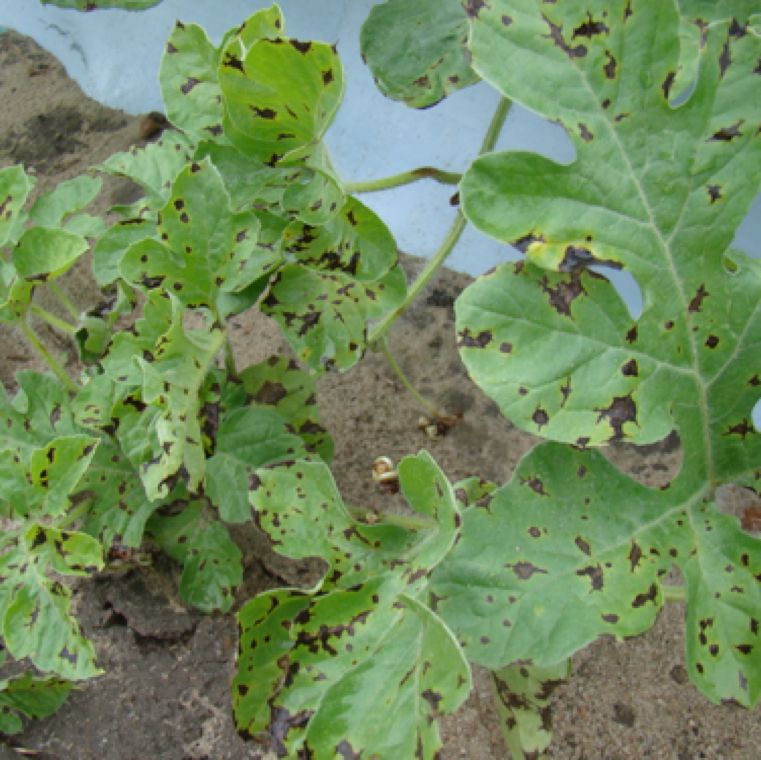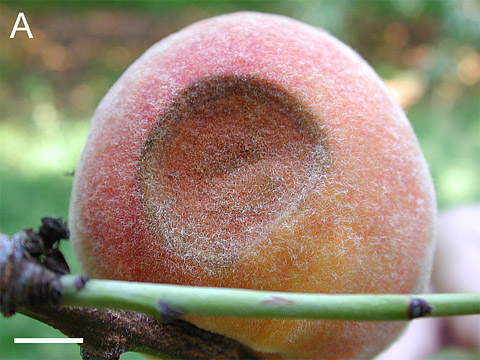By Clint Thompson A research grant targeting anthracnose disease in cucurbit crops has one University of Georgia scientist studying irrigation timing and leaf wetness. Tim Coolong, associate professor in the University of Georgia College of Agricultural and Environmental Sciences, outlined the details of his part of the research. “To document periods of leaf wetness and how that really influences the …
Anthracnose Disease a Growing Concern for Peach Producers
By Clint Thompson Anthracnose disease is on the rise in peaches in the Southeast. University of Georgia researchers are determined to find out why. Phil Brannen, University of Georgia Cooperative Extension fruit disease specialist, is wary that fungicide resistance is a culprit as to why disease instances have increased in recent years. “I fear, and it’s something we need to …
Anthracnose Identified on Lima Bean in the Pee Dee Region of South Carolina
Anthracnose disease has been reported on lima bean in the Pee Dee region of South Carolina, according to The South Carolina Grower. Persistent rainfall in the area helped spread the disease throughout the field. The lima bean anthracnose fungus, Colletotrichum truncatum, produces typical Colletotrichum spores in round gooey masses with black hairs. This gives the spore masses a black color. …
What To Do About Anthracnose Fruit Rot in Blueberries
By Philip Harmon and Doug Phillips Anthracnose fruit rot (AFR), also known as ripe rot, is a significant disease on southern highbush blueberries. Caused by the fungal pathogen Colletotrichum gloeosporioides on southern highbush blueberries in Florida, AFR creates sunken lesions on the surface of blueberries. This is followed by eruptions of orange- or salmon-colored spores from the lesions when the …
Watermelon Anthracnose: Current Trends and Future Directions
By Navjot Kaur and Bhabesh Dutta Watermelon anthracnose is caused by the fungal pathogen Colletotrichum orbiculare, which impacts all above-ground parts of the plant. C. orbiculare also causes anthracnose in other cucurbit crops such as cucumber, muskmelon, squash, gourd, pumpkin, cantaloupe and honeydew. The disease is favored by conditions including high humidity, rainfall, overhead irrigation and warm temperatures in the …
Management Strategies for Cucurbit Farmers Against Anthracnose
By Clint Thompson The best management strategies for cucurbit farmers in combating anthracnose disease occurs before the crop will be planted this season. Ed Sikora, professor and Extension plant pathologist in the Department of Entomology and Plant Pathology at Auburn University, discusses the importance of using varieties that are resistant to the pathogen. “Fortunately, we do have resistant varieties to …
Anthracnose Awareness: UF/IFAS Encourages Growers to be Wary of Disease
By Clint Thompson Incidences of anthracnose are on the rise in cucurbits in the Southeast. They’ve already impacted production in Georgia. Experts in Florida want producers to be wary of the disease. While this past season’s dry spring spared Florida production, anthracnose is still a concern for Gary Vallad, professor of Plant Pathology at the University of Florida Institute of …
Analyzing Anthracnose: Cucurbit Disease a Major Issue for Growers
By Clint Thompson One disease that Southeast cucurbit producers need to have on their radar this upcoming season is anthracnose. It is rapidly becoming a major issue for growers, says Bhabesh Dutta, University of Georgia (UGA) Cooperative Extension vegetable plant pathologist. “It’s now a major problem after Pcap (phytophthora capsici). It has been an emerging issue in our cucurbits including …
Resistant Varieties Key Against Anthracnose
It is never too early to start thinking about cucurbit disease management in Alabama. In the case of anthracnose, producers who are planting their crops are best served by utilizing resistant varieties, according to Ed Sikora, professor and Extension plant pathologist in the Department of Entomology and Plant Pathology at Auburn University. “I was just looking through the Southeast Handbook …
Protecting Peppers From Anthracnose
By Pam Roberts Anthracnose is a serious disease problem that can occur throughout pepper-growing regions worldwide. Extensive outbreaks of the disease have developed on bell and other specialty peppers types, such as hot peppers. The disease is more common when both the inoculum and warm weather combined with frequent rains occur. Fruit infections cause significant losses of either mature (red, …











